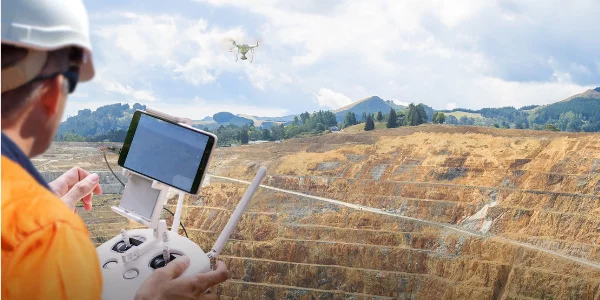Addressing Environmental Concerns in the Construction and Earthworks Industry with Drone Technology
The world is becoming more aware of the many ways that business and industry affects the environment. From carbon emissions to material consumption, all economic sectors are facing pressure to adopt sustainable practices—none more so than the construction industry.
The construction and earthworks sector isn’t known for being eco-friendly, but all that’s changing. Despite some conflicting goals and complex challenges, companies are responding with positive changes. Learn more about the environmental impact of construction, as well as how drone survey data is boosting sustainability in day-to-day construction operations.
How the construction and earthworks industry affects the environment
Every aspect of construction, from mining for raw materials to carbon emissions produced by machines moving on job sites, impacts the planet. Some of the most significant ways the construction and earthworks industry affect the environment include:
- Consumption of natural resources. According to recent figures from the WorldWatch Institute, the construction industry consumes 40% of the world’s usage of raw stones, gravel, and sand. It’s also a top consumer of virgin wood, representing 25% of the world’s entire usage. This problem requires action, as supply of these natural materials can and will run out at the current pace the industry is using them.
- Biodiversity impacts. Put simply, the construction industry disturbs wildlife in the short and long term. Biodiversity impacts include noise and light pollution from machines; population fragmentation from habitat loss; and air and water pollution. Even pre-construction traditional ground surveying has an impact on sites.
- Atmospheric impacts. Studies have shown the construction industry is responsible for at least 39% of energy and process-related carbon emissions. In short, construction is directly linked to the most significant contributor to climate change. From hauling earth to transporting building materials, it all adds to atmospheric pollution that will have long-term impacts on the entire planet.
What can be done about the environmental impact of construction?
Construction and earthworks teams are answering the call of building more sustainable practices, mainly by investing in new technologies. Drone data is particularly useful in all stages of construction, on any project, from start to finish. It’s transforming the day-to-day practices of construction companies around the world, providing a renewed commitment to protecting the environment.

By flying work sites regularly—and even before placing a bid on a project—construction teams have access to up-to-date insights on the site as it stands and what work needs to be done to move the construction project forward. Here are just some of the ways drone surveying reduces a few of the most pressing environmental concerns involved in construction:
- Reducing rework. With continual progress monitoring throughout the duration of a project, site managers can make swift, informed decisions regarding how work is progressing against design. Catching problems early helps teams avoid costly, environmentally damaging rework. Not only does eliminating rework prevent the waste of natural materials, but it also keeps movement of heavy machinery to a minimum, holding carbon emissions as low as possible.
- Protecting animal habitats. Traditional survey methods require cutting sight lines and making room for surveyors, disturbing the environment before heavy machinery rolls onto the jobsite. Drone surveys typically require no physical intervention—they can be launched from almost anywhere, silently collecting data and keeping animal habitats intact.
- Reducing fuel burn. Drone surveys help site managers quantify and measure all distinct zones of a project, making site prep more efficient than ever before. Earthworks equipment in particular burns a lot of fuel during site prep. Regular drone flights give site managers the information they need to plan work in the most efficient methods possible, providing clear directions on how to proceed and minimizing fuel burn. The result is not only reduced consumption of fuel—a finite resource—but also reduced carbon emissions.
Drones lead the way toward greater sustainability in construction
Drones are becoming a common sight at construction sites around the world. In addition to the various financial and safety benefits drone surveying provides, these also promote sustainability. By making construction sites more efficient—even before breaking ground—drone surveys offer actionable insights that contribute to an eco-friendlier construction process, from start to finish.




